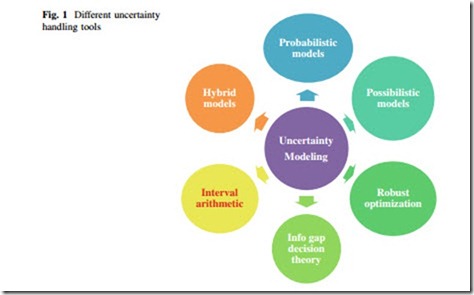Abstract With the introduction of new concepts in operation and planning of power systems, decision making is becoming more critical than ever before. These concepts include restructuring, smart grids, and the importance of environmental concerns. The art of decision making is defined as choosing the best action among available choices considering the constraints and input data of the problem. Decision making is usually a complex task which becomes more sophisticated when the input data of the problem are subject to uncertainty. This chapter presents a critical review of the state-of-the-art uncertainty in handling tools for renewable energy studies. Different uncertainty modeling tools are first introduced and then the appropriate ones for renewable energies are identified. Then, each method is implemented on a simple two-bus case study.
Introduction
Power system studies include a wide range of issues from short term (e.g. real- time, hourly, daily, and weekly operating decisions) to long-term horizons (e.g., planning or policy making). The decision making process involves dealing with uncertain input data especially in engineering systems. Due to the increasing penetration level of renewable energy resources, like wind and solar power, the uncertainty is increased in operation and investment decisions of various involved entities. Different techniques have been developed to deal with uncertainties in decision making. It is of interest to know the differences and similarities as well as the application areas. In this chapter, a new standard classification of uncertainty modeling techniques for renewable energy resource impact assessment under
uncertainty is proposed. These methods are introduced and implemented and their strengths and weaknesses demonstrated. The existing uncertainty modeling tech- niques cover a wide range such as probabilistic approach [1, 2], possibilistic approach [3], hybrid possibilistic probabilistic approaches [4], information gap decision theory [5], and robust optimization [6, 7] as shown in Fig. 1.
Among these methods, the probabilistic techniques are more appropriate for impact assessment of renewable energies. The main reason for this fact is that the output of renewable energy resources basically depends on the characteristics of their primary energy resources such as solar radiation, wind speed, environmental temperature, etc. The historic data of these parameters is usually available and they can be modeled using a probability density function (PDF).
